The Museum of Crypto Art
Cofounder Colborn Bell shares his vision of democratically governed art institution for the metaverse.
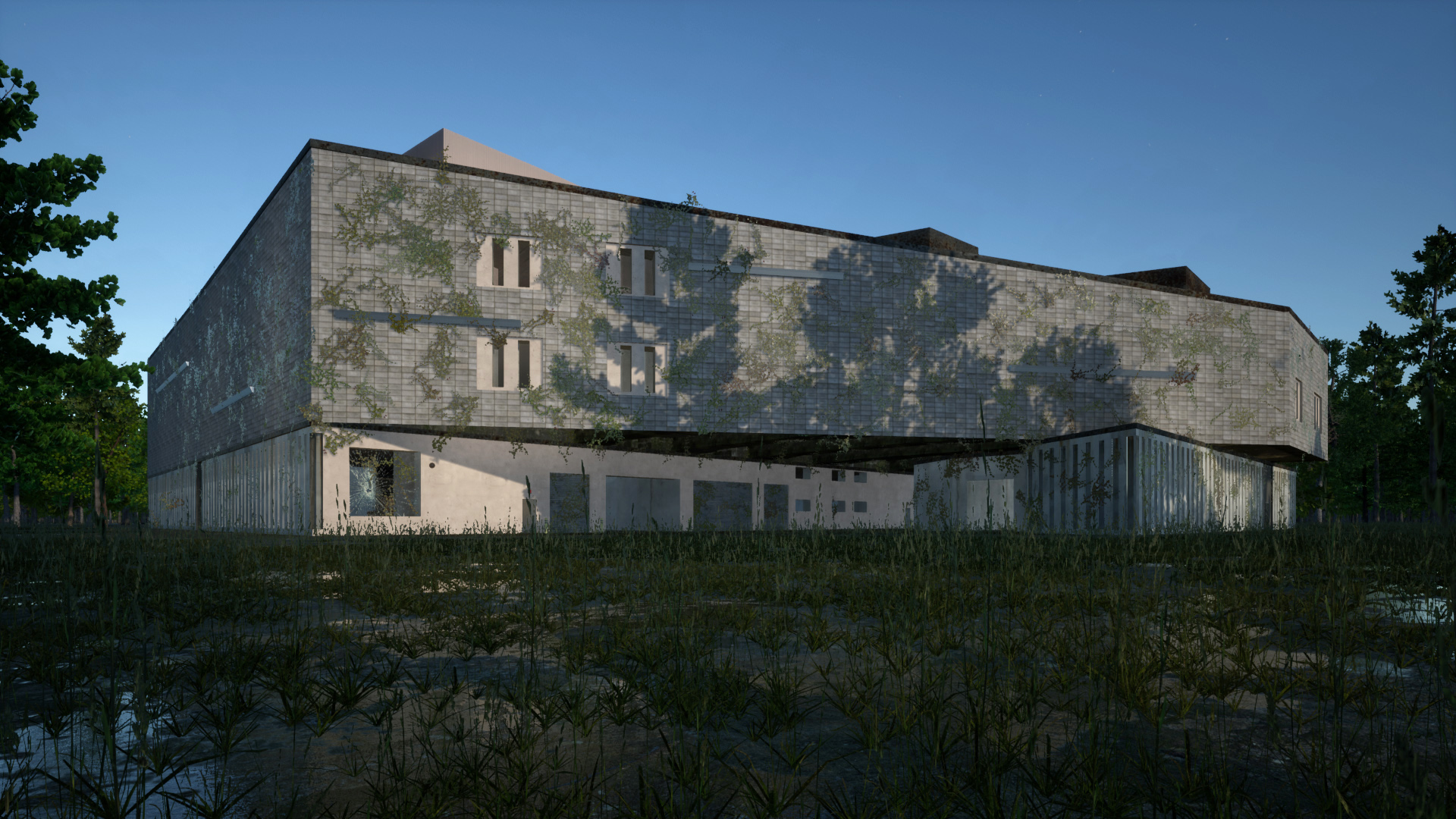
The NFT art market is often described as lacking context: individual works sell on crowded platforms where it’s hard to identify meaningful connections among them. What would it look like to sell works of digital art as an ensemble? Multimedia artist Peter Wu+ is exploring this question through his project EPOCH Gallery. Each exhibition at EPOCH situates works by multiple artists in atmospheric virtual environments, textured with signs of ruin and decay. Viewers navigate the shows through a point-and-click system that harkens back to graphic adventure games like Myst. EPOCH launched in the spring of 2020. Starting with “Freeport” this past summer, its exhibitions have been for sale as NFTs; collectors receive the environment and all the works in it. “Replicants,” EPOCH’s second NFT show, reconstructed a dusky, rain-slicked street in Hong Kong, evocative of Blade Runner, as a setting for the art. “Echoes,” the exhibition currently featured on the EPOCH Gallery website, was developed in collaboration with the Art + Technology Lab at the Los Angeles County Museum of Art. It features past and present recipients of the Lab’s granting program in a landscape modeled after the excavation site where the new LACMA building is under construction. In the following interview, Wu+ discusses the genesis of EPOCH, how he collaborates with artists to digitize and display their work, and his approach to NFTs.
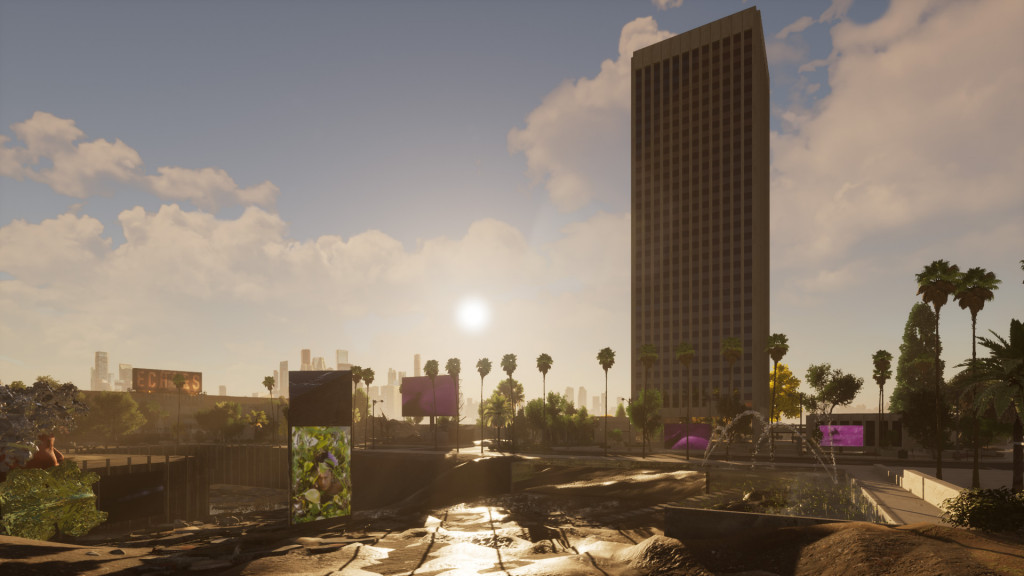
EPOCH started at the beginning of quarantine when artists were losing exhibition opportunities. I wanted to create a new kind of space for virtual shows that would situate art in different contexts. The first exhibition, “End Demo,” was set on a stark, bleached island, with artworks installed in ruins. I think I was trying to capture the isolation we were feeling at the time and comment on how brick-and-mortar galleries, and the world around us, were crumbling in the wake of Covid.
In February 2021, the whole NFT craze was already underway. A lot of artists I was showing with said EPOCH was poised to take part in it. I was skeptical, because whenever you bring money into something, it can corrupt your initial intention. If I was going to use NFTs, I wanted to do so in way that would be beneficial for everybody and align with EPOCH’s ethos: trying to break systems or call them out and do things differently. Then I had a eureka moment. What’s missing in the NFT space is context, and EPOCH has context in spades. Instead of minting individual works, why not mint the entire show? I developed a smart contract that splits profits among participating artists. At EPOCH 70% of proceeds go to the artists, and 30% remains with the gallery, instead of the standard 50/50 model of the gallery. The first two NFT exhibitions, “Freeport” and “Replicants,” raised $65,000 to support artists.
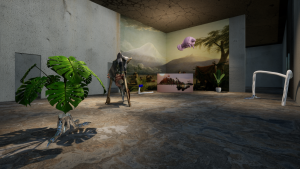
I worked with a developer to build a pay portal that interacts with the Algorand blockchain so collectors can purchase an exhibition directly from EPOCH’s website. I didn’t want the editions to be listed on NFT marketplaces because of the glut and speculation associated with them. I chose Algorand because of its proof-of-stake protocol. Neither I nor the artists wanted to contribute to ecological damage caused by proof-of-work blockchains. Also Algorand solves the blockchain trilemma of scalability, decentralization, and security, which was also appealing.
“Freeport” was released in June 2020. I wanted to draw the parallels between NFTs and the art world, and how both are associated with unsavory behavior like money laundering, tax evasion, and fraud. Freeports are high-security storage facilities outside the tax jurisdictions of any country—they’re often used by the uber-rich to hoard significant works of art. I modeled the Luxembourg Freeport because the blueprints and elevations were available online. I was also thinking about how the economics of the NFT could be part of the project. With the “Freeport” NFT, I wanted to mirror the scarcity model that the art world utilizes, selling lower editions at higher prices, to comment on perceived value.
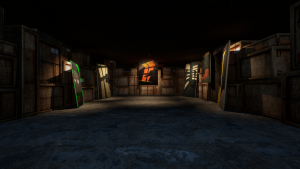
Alice Bucknell was the first artist I invited to participate in “Freeport.” She seemed to align with EPOCH’s sentiments of being against the accelerated speculation and ecological damage of NFTs minted on Ethereum. Bucknell works with speculative fictions, and for this show she submitted her video, Swamp City (2021), about luxury ecotourism in the aftermath of a climate disaster. We extracted some models from her video to create a virtual installation. I took a similar approach with Juan Covelli, showing his video Terra incognita (2019), about technology and colonialism, amid models and assets taken from it. Alexandra Koumantaki works with site specificity, making interventions in nature. She used photogrammetry to scan a monolith on location. I helped her translate it into a 3D model and virtually installed on a roof in “Freeport.” Neil Beloufa’s work, The Freeport Song (2021), consists of virtual renderings of six existing paintings, placed in a storage area and singing about their life in limbo.
Virtual environments don’t have limitations on scale or physics, so they don’t have the high production costs that can prevent a physical artwork from being realized. This can be freeing for the artist’s imagination. In the shows EPOCH has put on, artists have approached this opportunity in different ways. Some like to use the space as a way to visualize a work they may be working through in their studio. Others use it to test out public art proposals. The hotspot navigation allows me to lead the viewer through the show. Artworks and ideas build upon each other, creating crescendos and leading to a denouement.
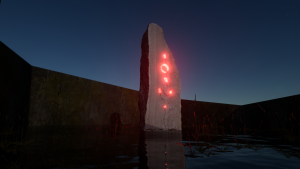
I see EPOCH’s exhibitions as total works of art. There is a reciprocal relationship between the artworks and the environment but without the art, the environment is a mere shell. EPOCH provides artists with a new critical context to display their works, but they also are providing something that galvanizes the space. I’m very careful of making sure that their works are the main focus. The environment provides a critical context reflecting the challenges of our late capitalist world.
I sell mainly to traditional art collectors and try to convert them. I spend a lot of time on education, helping collectors open a Coinbase account or a wallet. I hope the virtual exhibitions will heighten accessibility to contemporary art and culture to a wider audience. EPOCH started because of Covid, but it’s challenging the traditional brick-and-mortar gallery structure in a way that is strategically positioned to last beyond the pandemic.
—As told to Brian Droitcour
